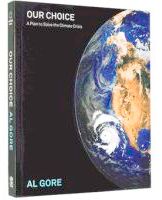 “Producing first generation ethanol from corn is a mistake,” writes Al Gore in his new book, “Our Choice A Plan to Solve the Climate Crisis.” The book details the issues surrounding global warming, and presents various options to curb the issue. As a writer in the agricultural industry, I paid extra attention to the chapter regarding biofuels. It came as no surprise that corn ethanol was not presented favorably.
“Producing first generation ethanol from corn is a mistake,” writes Al Gore in his new book, “Our Choice A Plan to Solve the Climate Crisis.” The book details the issues surrounding global warming, and presents various options to curb the issue. As a writer in the agricultural industry, I paid extra attention to the chapter regarding biofuels. It came as no surprise that corn ethanol was not presented favorably.
Gore writes, “The production of ethanol in first generation biorefineries has been a disappointment. However, it has had the benefit of increasing income for farmers and has led to the emergence of an infrastructure that will prove highly valuable when second generation technologies are available to produce ethanol from nonfood crops.” He goes on to discuss his personal disappointment with his early support of corn-based ethanol and then continues to lay out the case for second and third generation fuels including cellulosic ethanol.
The industry hasn’t taken the criticism lying down. Bob Dinneen, the president of the Renewable Fuels Association sent a letter to Al Gore stating, “Given your attention to science and the facts, I am disappointed by the treatment of ethanol and other biofuels in your new book, Our Choice. Many of your characterizations of today’s American ethanol industry are out of date or simply wrong.”
Biofuels aside, throughout the book, Gore uses a combination of words, graphics and pictures to demonstrate the climate change debate, detail many of the solutions and offer policy recommendations. There is one area where I think Gore did a great job, and that is explaining what the six categories of global warming pollution are: carbon dioxide, methane, black carbon, sulfur hexaflouride, tetrafluoroethane, carbon monoxide, butane and nitrous oxide. To date, the biggest focus has been on carbon dioxide and Gore’s focus throughout the book is no different.
No matter what side you are on in the global warming debate, Our Choice will give you a platform for futher disucssions on how best to create programs and policies to address global warming.
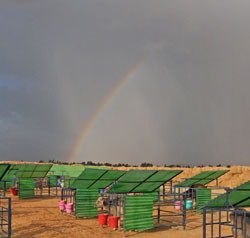 It is very rare to see a rainbow in the desert according to the people the U.S. Grains Council Corn Mission team was meeting with at the time.
It is very rare to see a rainbow in the desert according to the people the U.S. Grains Council Corn Mission team was meeting with at the time.
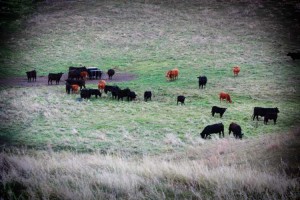 Looking at the dollars and cents of the agriculture industry today can be tough at times. With sky-rocketing input costs and low-profit margins, producing food has become an even more challenging “game” than ever before. Because of the struggling economy and decreased consumer spending, there are less dollars to go around, and that means ag lenders are having to tighten their pocketbooks, as well.
Looking at the dollars and cents of the agriculture industry today can be tough at times. With sky-rocketing input costs and low-profit margins, producing food has become an even more challenging “game” than ever before. Because of the struggling economy and decreased consumer spending, there are less dollars to go around, and that means ag lenders are having to tighten their pocketbooks, as well. “Producing first generation ethanol from corn is a mistake,” writes Al Gore in his new book, “
“Producing first generation ethanol from corn is a mistake,” writes Al Gore in his new book, “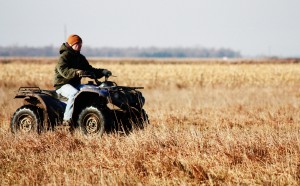 Everyone has that farmer or rancher in their life to shop for this Christmas, and boy, can it get tough to select the perfect gift for this category. Every year, I think my dad counts on getting Coveralls and pliers from Santa, and I’ll admit, we struggle trying to shop for him. If you are like me, you spend many painful hours trying to navigate the aisles of Sears, Menards or Cabelas in the hunt for the best present, only to purchase the same things year after year.
Everyone has that farmer or rancher in their life to shop for this Christmas, and boy, can it get tough to select the perfect gift for this category. Every year, I think my dad counts on getting Coveralls and pliers from Santa, and I’ll admit, we struggle trying to shop for him. If you are like me, you spend many painful hours trying to navigate the aisles of Sears, Menards or Cabelas in the hunt for the best present, only to purchase the same things year after year. 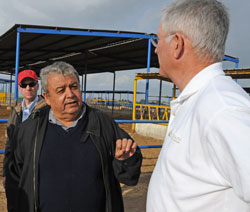 The Chairman of the
The Chairman of the 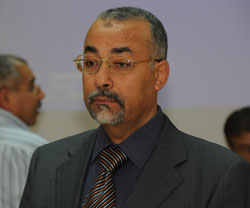 Presenting information at Cairo University on the Cattle Information Center was Dr. Samy Abou-Bakr.
Presenting information at Cairo University on the Cattle Information Center was Dr. Samy Abou-Bakr.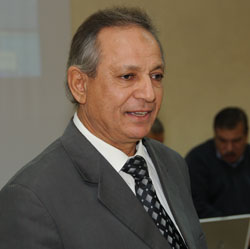 The first stop for the U.S. Grains Council Corn Mission team today was
The first stop for the U.S. Grains Council Corn Mission team today was 
